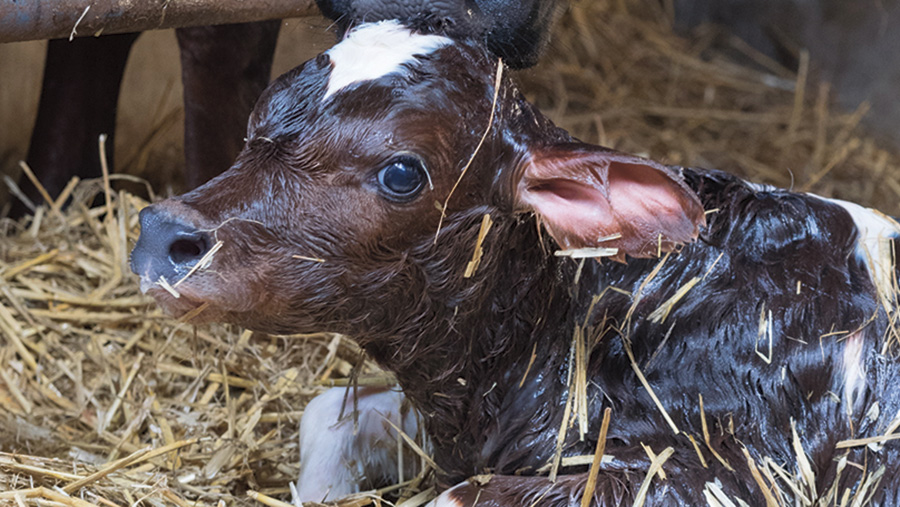Vet Viewpoint: Calf health issues due to lack of colostrum
 © Kathy Horniblow
© Kathy Horniblow Health issues related to calves not receiving enough colostrum are among those highlighted in this month’s Vet Viewpoint.
Reporting from as far south as Cornwall and far north as Caithness, this month’s XL Vets Group representatives also offer advice on investigating and controlling bovine respiratory disease and limiting badger contact with cattle.
See also: Vet Viewpoint: Dairy diets, bluetongue and ram selection
Matthew Berriman, Rosevean Veterinary Practice, Cornwall
Calving has started and we have seen some calf health issues related to calves not receiving enough colostrum.
Calves rely on the colostrum fed to them in the first six to 12 hours of life to provide an immune system.
If they fail to receive enough colostrum, high incidences of diseases such as navel infections, joint ill and scour are often seen.
The highest-quality colostrum is produced by the cow just after calving.
It is important to milk the cow as soon as possible after calving and use this colostrum to feed the newborn calf.
Four to six litres of colostrum should ideally be fed within the first six hours of life.
Vaccines can be used for specific diseases to further increase the quality.
We have also seen cases where cows are producing low-quality colostrum due to low levels of protein in the dry-cow diet.
Rob Henderson, Midshire Veterinary Group, Warwickshire
This summer saw more beef suckler farms using synchronisation and fixed-time AI to mate maiden heifers.
Pregnancy rates of 65% or higher are possible and will increase the number calving at the start of the calving period compared with natural service giving better sale weights.
Running a bull afterwards to serve returns to AI will tighten the calving period further, but check his breeding soundness first.
A large range of AI sires with EBV data are available, allowing bull selection to improve calf quality and reduce difficult calvings.
Best results require careful planning. Ensure heifers are well flushed and at optimal BCS, age and weight at service.
Any mineral supplements, parasite treatments and vaccines required should be given well before service.
Prevention of diseases such as BVDv, IBR and leptospirosis should be considered, especially if heifers are bought in.
Ken Wilson, Donald S McGregor and Partners, Caithness
Bovine respiratory disease is one of the most economically significant diseases affecting the beef industry in the UK.
Cost issues sit alongside the obvious welfare problems and the fact that a significant volume of antibiotic medicine is used to treat these diseases.
The majority of infections occur within one month of housing in the autumn, so devising a strategy for control and understanding the best ways to investigate an outbreak is worth discussing with your vet at this time of year.
Identifying the bacteria and viruses involved in causing the disease can help to inform choices of treatment and vaccination protocols.
Establishing whether other risk factors are likely to be involved can be used to consider changes to husbandry processes in the future.
Ventilation, stocking density and nutrition should be assessed.
Diagnostic tests, including post-mortem examinations, are best targeted to acutely affected, untreated animals.
Mike John, Fenton Vets, Pembrokeshire
Much has been made over regional differences in TB control policy over the summer just gone.
After a desperately bad few months for TB within our practice, it won’t surprise anybody to learn that it remains one of the main concerns to our farmers.
See also: Vet Viewpoint: Warm, muggy weather causes health issues
Here in Wales, when there is a new breakdown or when a herd becomes clear, the government provides funding for the farmer’s own vet to give specific advice.
Recommendations generally include how to restrict badger contact with cattle and reducing the likelihood of infected cattle entering the herd.
With winter housing approaching fast, much of this advice is highly relevant.
Whatever way TB will ultimately be controlled and putting these recommendations in place will play an important role.
